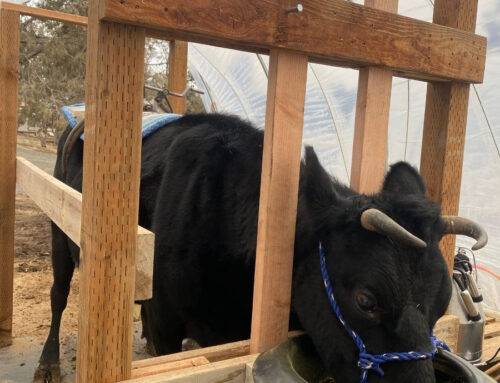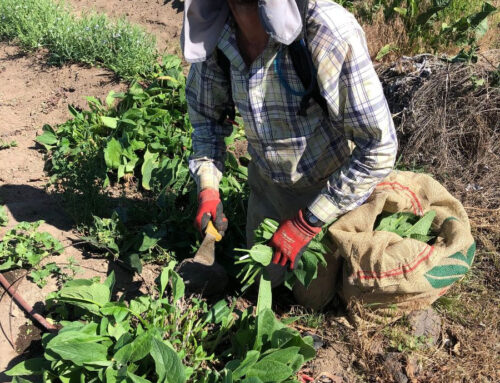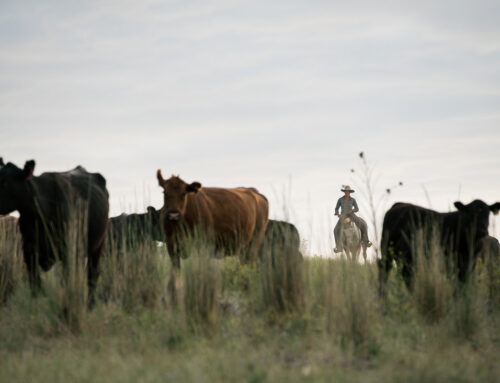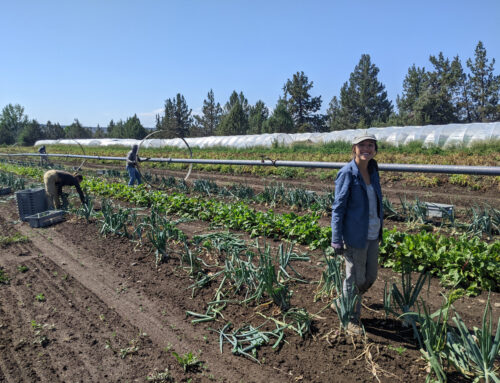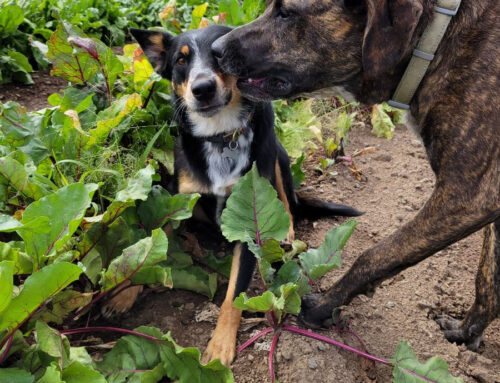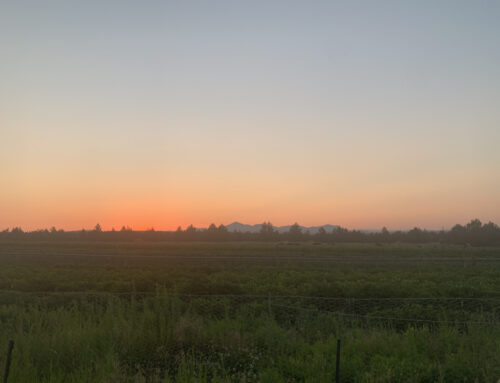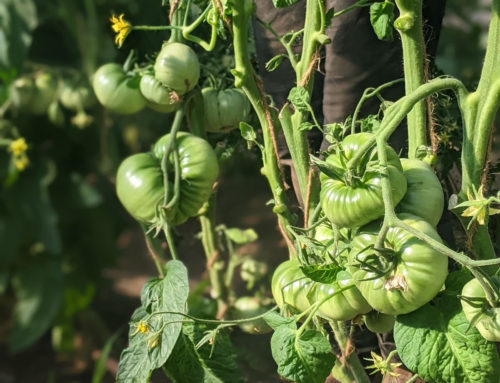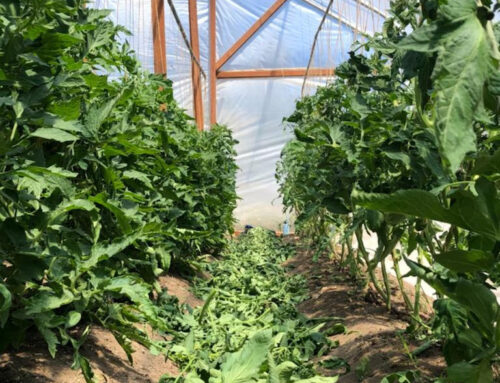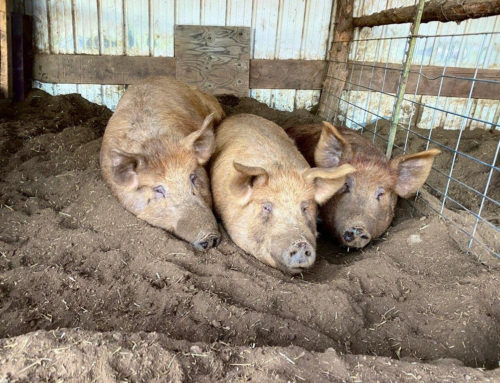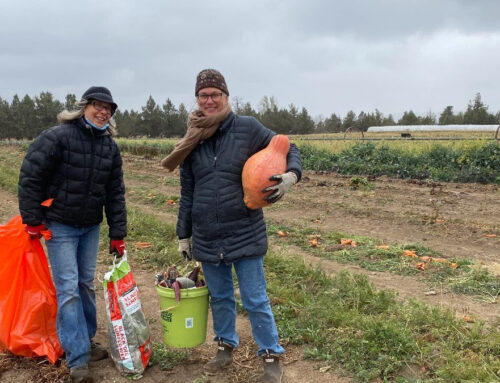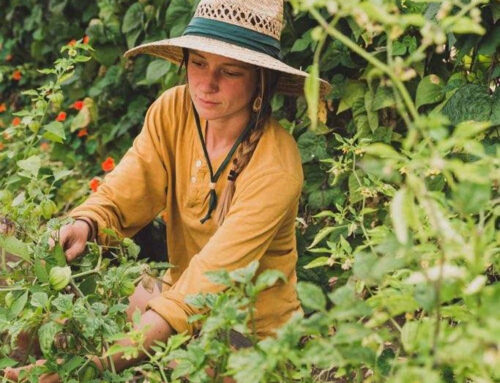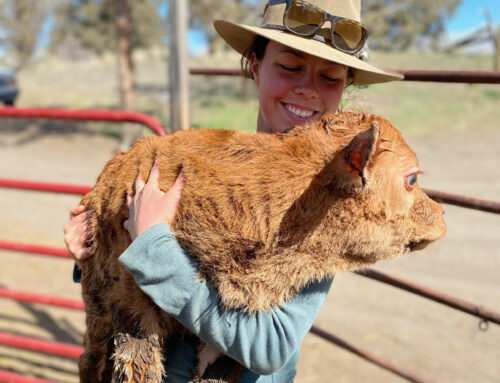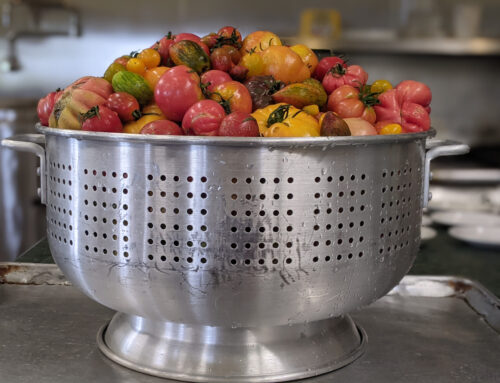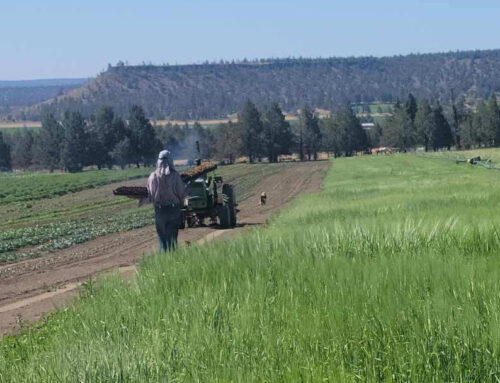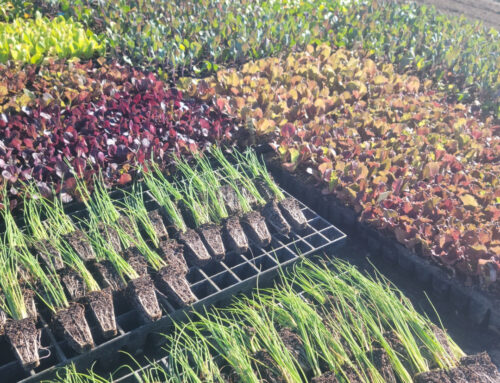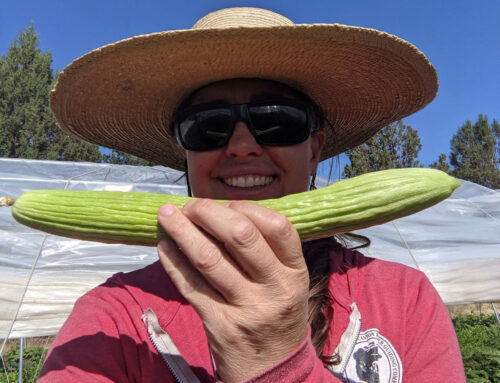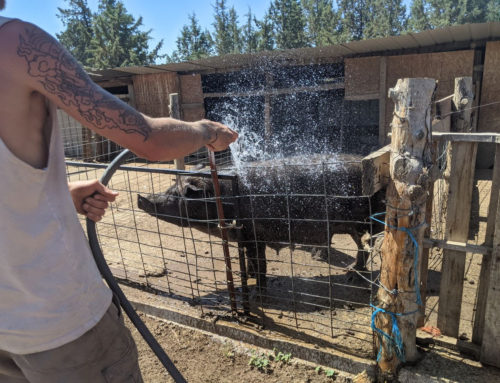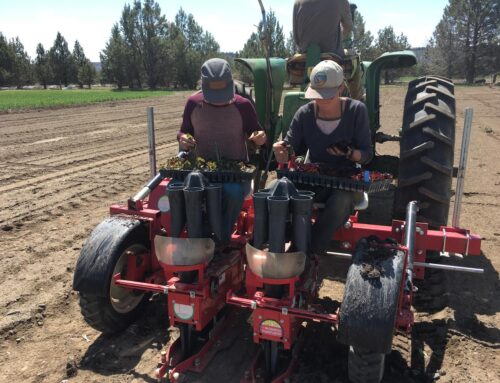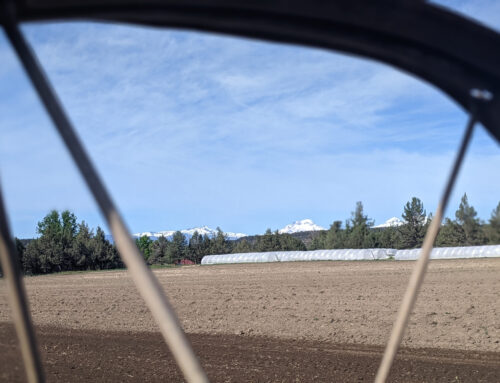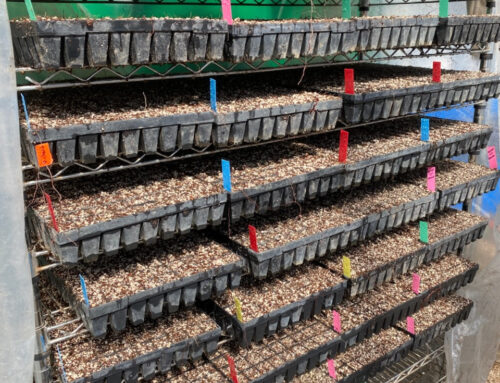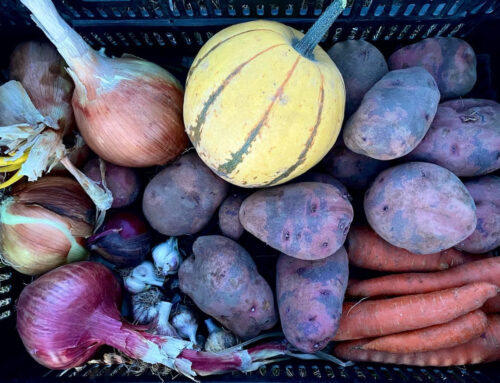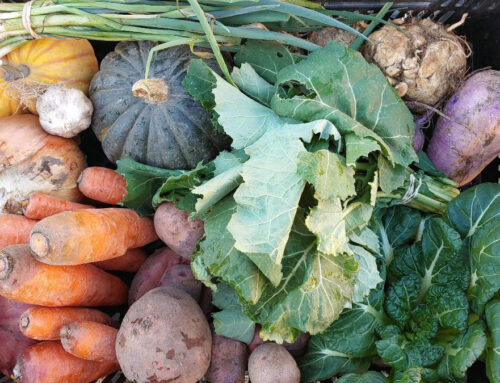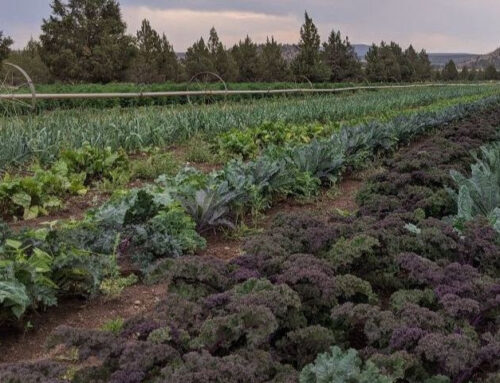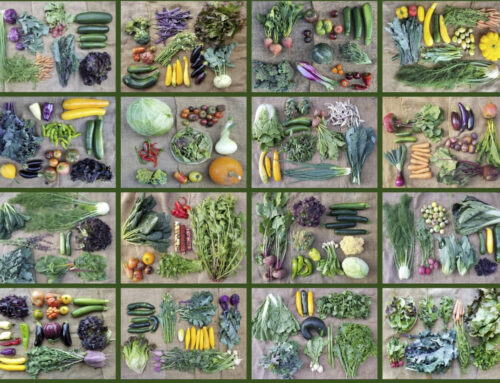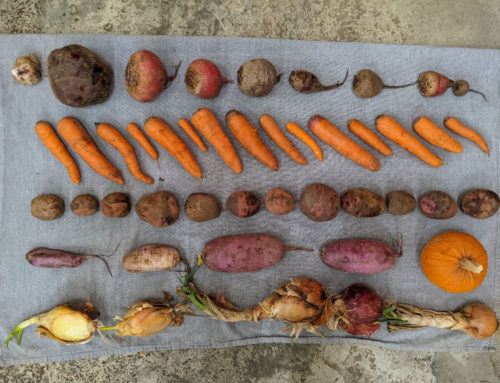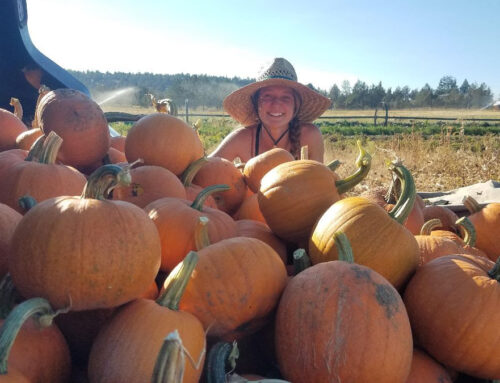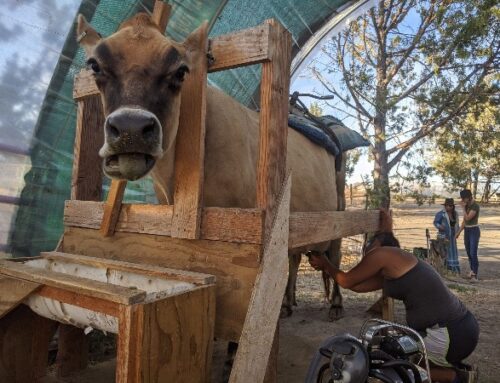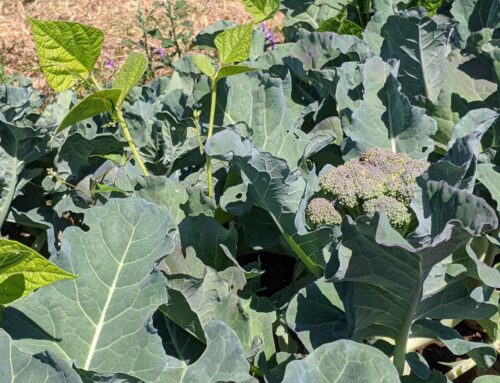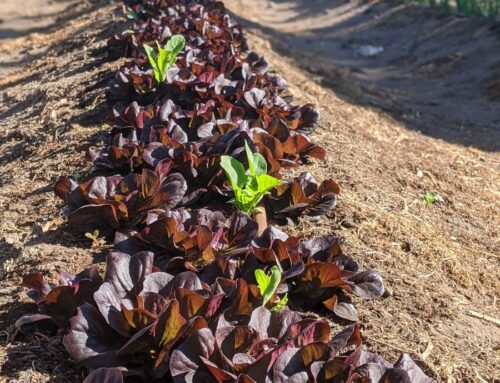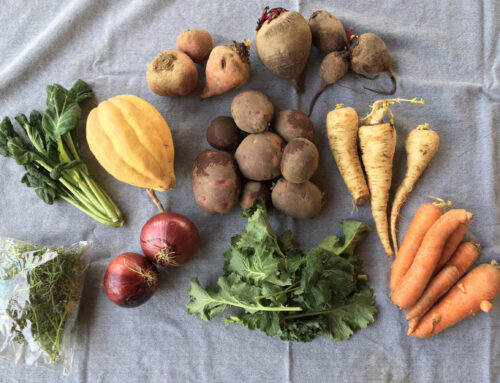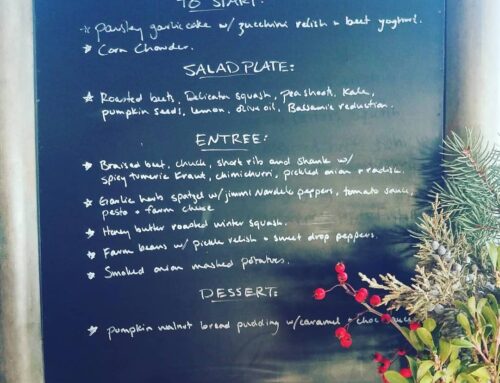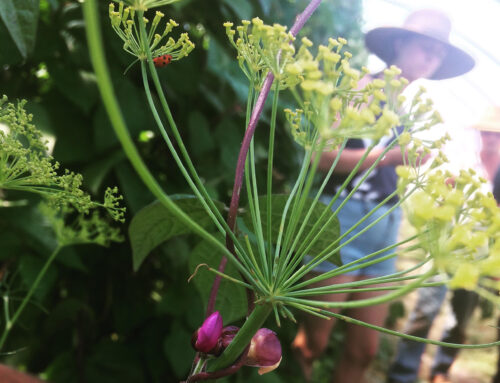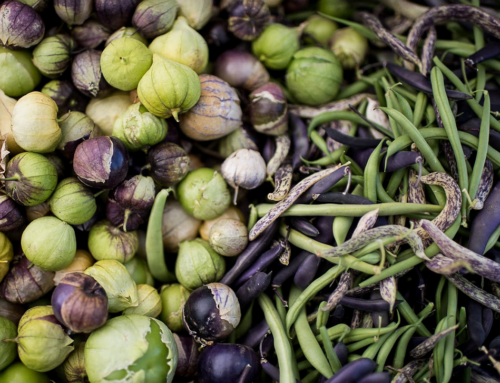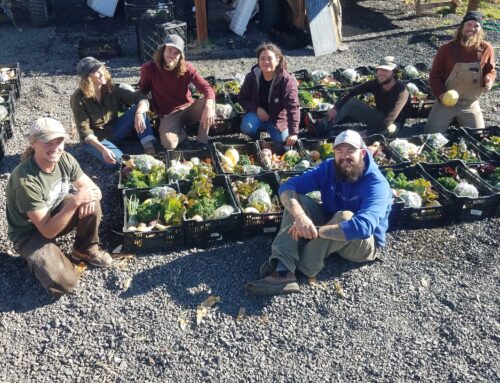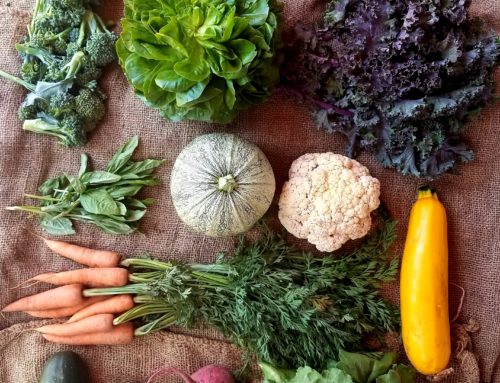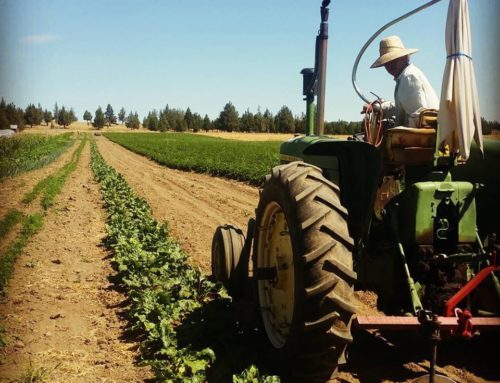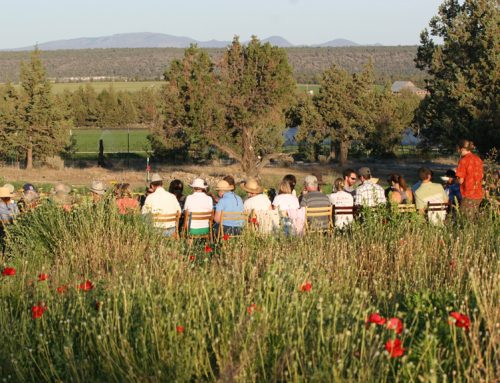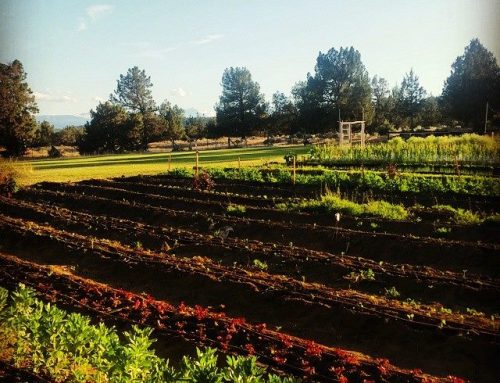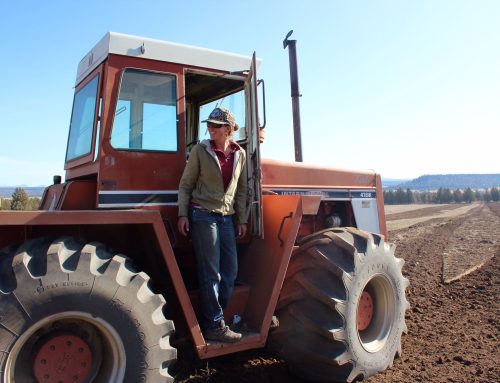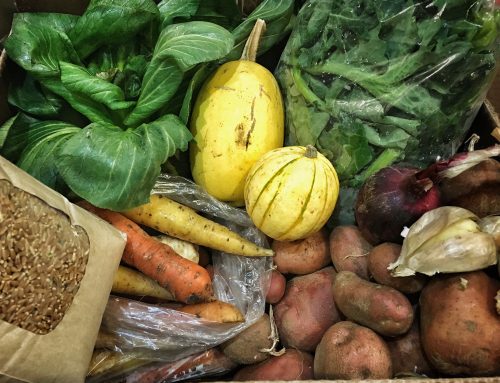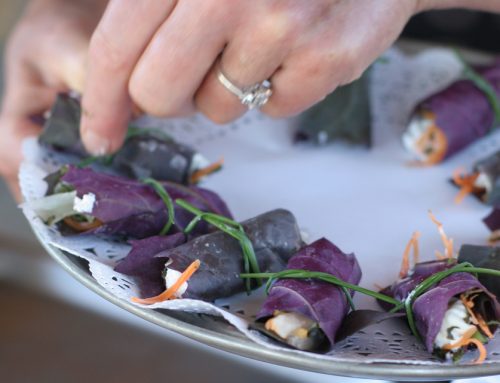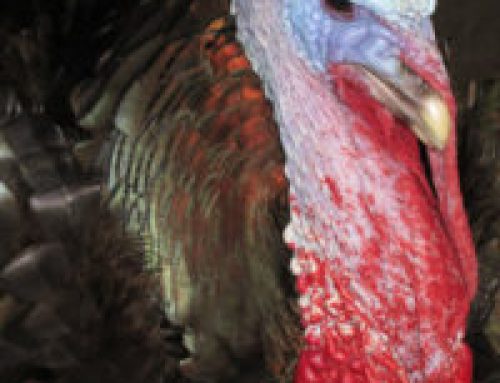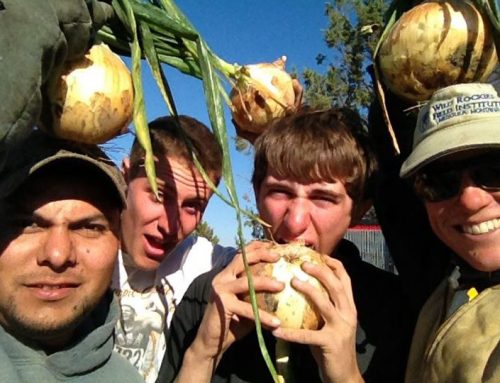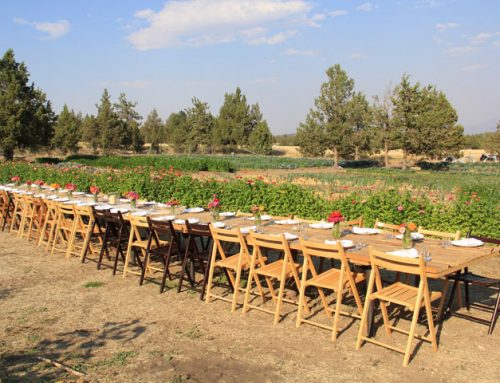Noah shows us the good side of weeds
Meet your farmer
It is with pleasure that I introduce myself to the individuals and families that create a need for our special work here on the farm. My name is Noah, and this is my second year as a full time farmer at Rainshadow.
Born and raised on the Oregon coast in Coos Bay, I had little introduction to agriculture aside from my parent’s chickens and the occasional visit to my distant family’s dairy farm. After joining the Rainshadow team through the internship program with the Rogue Farm Corp, my eyes were quickly opened to the endless avenues one could choose to become an integral player in their local community and beyond. I made the connection between humanity’s troubles and how large a role our food sourcing and accessibility plays in bringing some sense of balance to our worldly affairs.

Photo credit: Natalie Leder
Everybody Eats
Abundant August is feeding everything on the farm–from all of you, to the plants and animals that in turn feed our soil. When we start to think of all the delectable things that are ready to be harvested, I’m sure most of our minds jump to juicy tomatoes, supple greens, fresh onions and fennel as well as the long awaited potatoes and sweet corn.
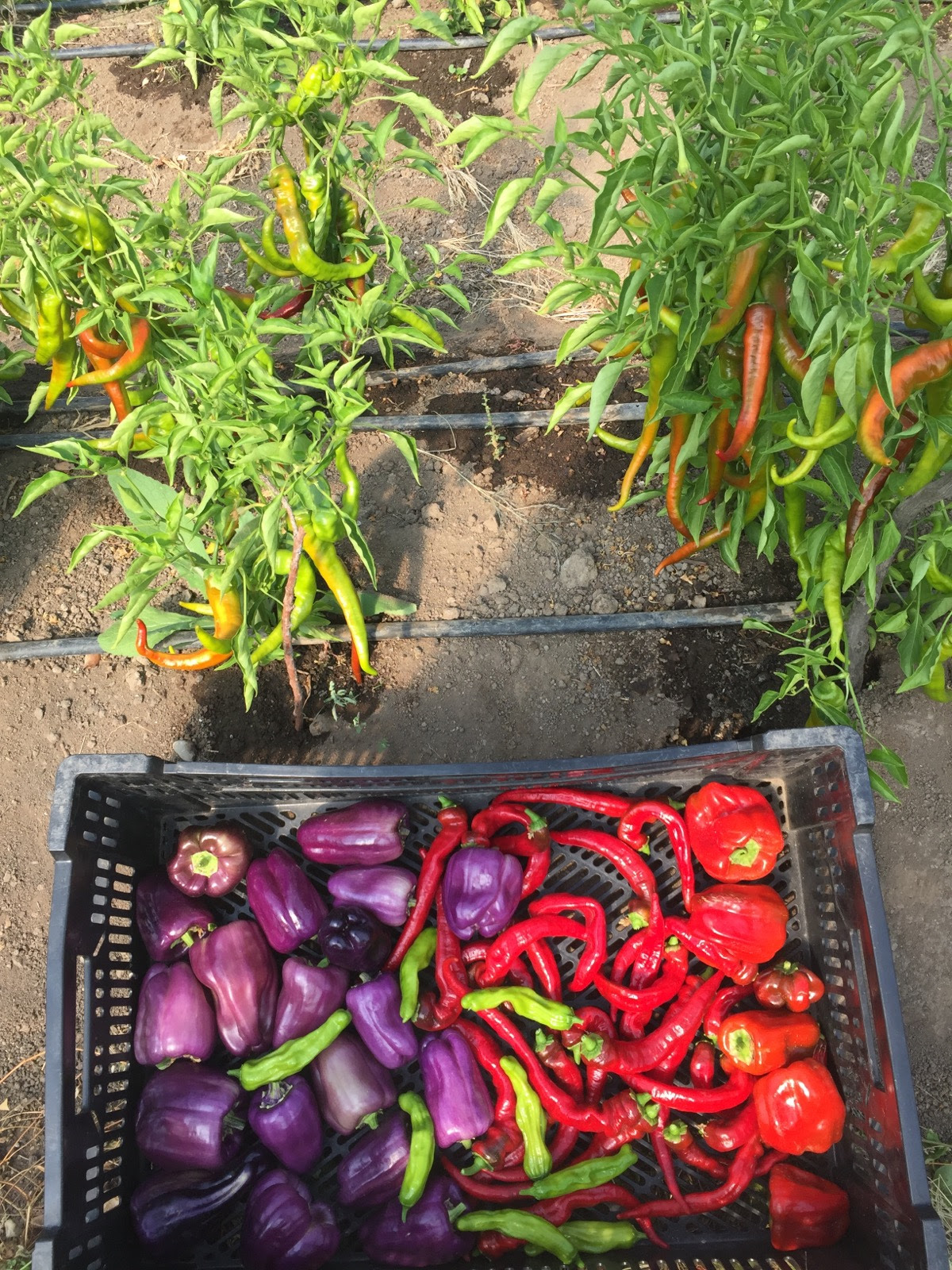




Year’s first winter squash. (photo credit: Nat Leder.)
But there is something else coming out of the ground that is less revered and often disputed in its worth–WEEDS. And if the pigs could read, I’m SURE that would be the seasonal treat at the forefront of their brains.
As organic farmers, we spend hours physically and mechanically fighting off the never ending onslaught of weeds. But this gives us a lot of time to re-think their value. As we pluck away in the field, we keep a flatbed truck nearby and pile up load after load of pigweed, purslane, button weed and lambs quarter to bring to the herd of squealing pigs. Not only is this a highly nutritious snack in large quantities, but it helps us in another major way: keeping those weeds from dispersing thousands of more seeds into our soil and perpetuating their growth for years to come.
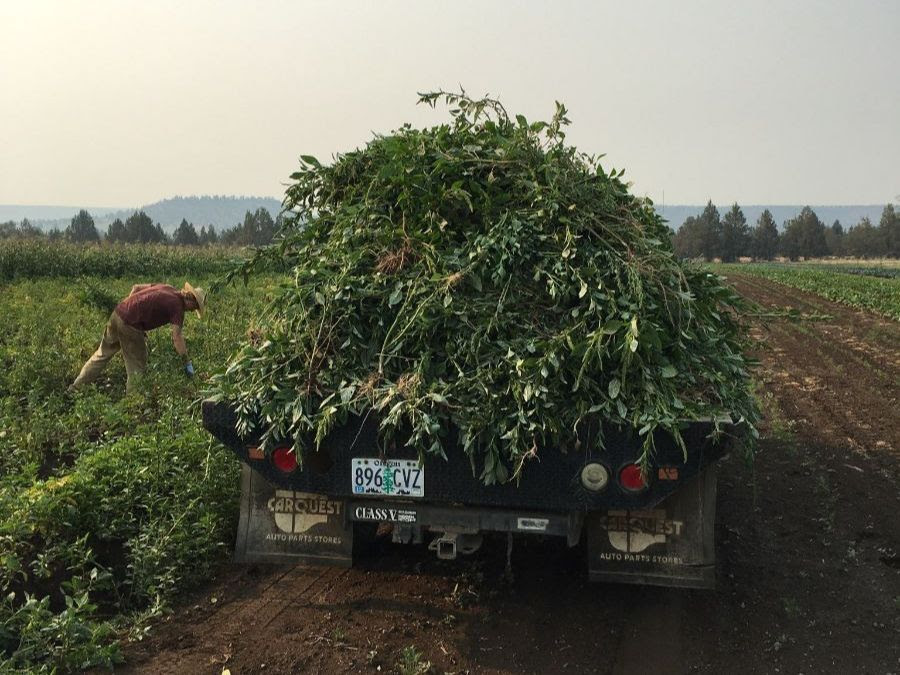

Pulling weeds, putting them on the flat bed and feeding them to eager pigs. (Photo credit: Kiely Houston and Noah Graber.)
It’s not just the pigs who are enjoying our farm this August. The cows have returned from pastures in eastern Oregon and a few of them helped our dairy cows munch away at our cover crop. This diverse grazing is incredible for their diet and is helping produce creamy milk that Chef turns into butter, farm cheese, and yogurt. What’s more, the manure from these cows, and the plant material from the cover crop once disced in with the tractor, will be incredibly beneficial to our soil health by increasing our organic matter.
Our wonderful laying hens have a place in this process as well. Equipped with our ever expanding fleet of chicken houses on trailers, we are looking to wheel them out onto the cover crop after the cows have grazed it down. They can scratch the cow manure and topsoil, acting as a natural tilling implement. Their manure adds once more to the organic matter available in our soil. The cows and chickens work together using their individual abilities to love life and bring life to the land. A perfect one, two combo. Now if only we can find a way to get those hungry hogs out there…

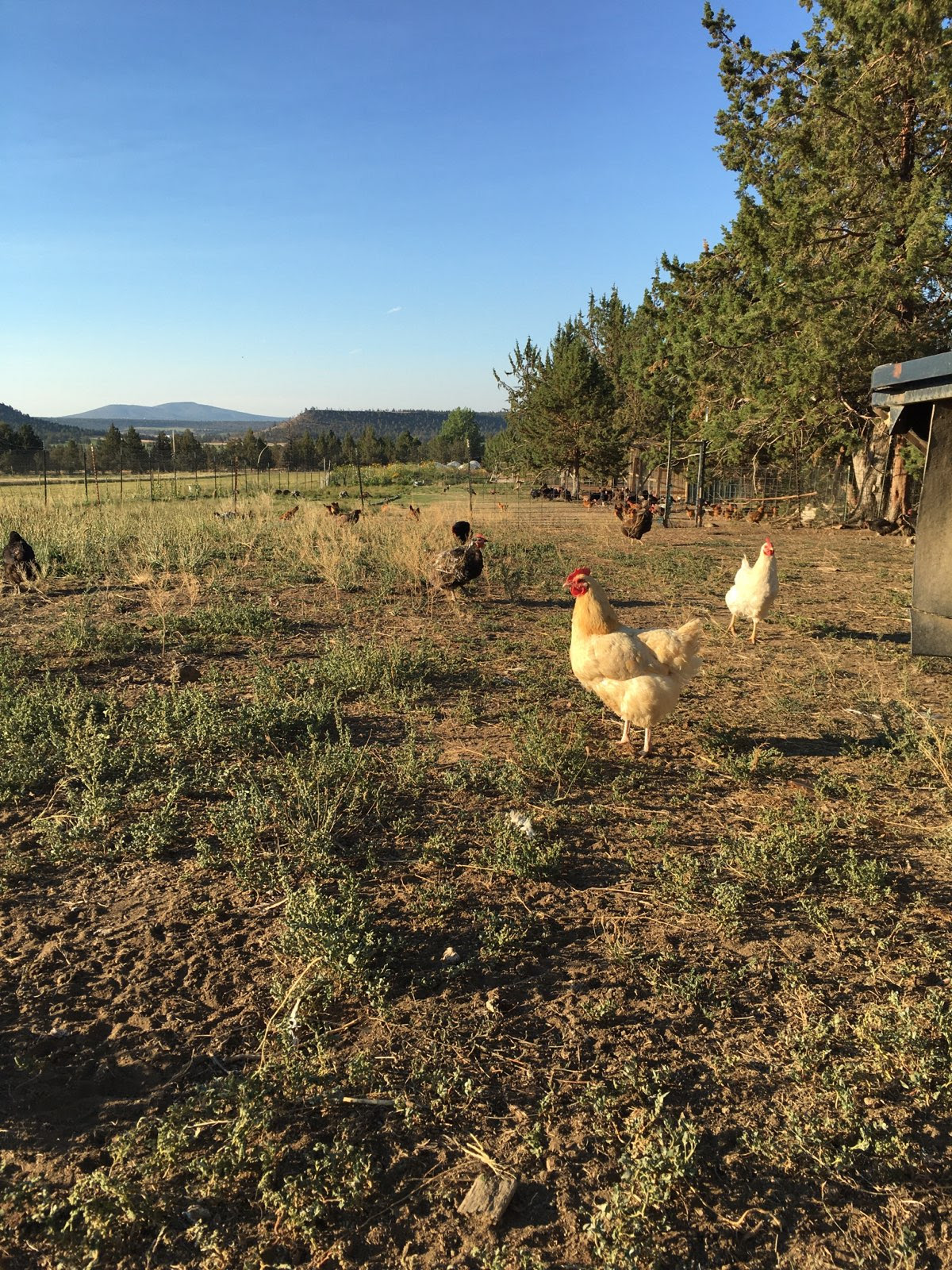
Ginny Weasley chilling in the cover crop and our chickens wandering about grazing their pasture. (Photo Credit: Kiely Houston.)
Winter CSA now on Sale!
Sign up for your Winter CSA today! Sales are open exclusively to our current Summer CSA members and our waitlisted community for 2 weeks only!
For the 2021-2022 winter CSA we are offering a monthly mixed Meat and Vegetable CSA for $1183! That breaks down to $169 per month: $65 in veggies and $104 in meat.
Each month you will receive 10 lbs of meat and a full crate of fresh and storage winter vegetables!
- Your 10 lbs of meat/month will include whole chickens, and variety pork and beef cuts. Each month you will receive ground beef.
- Your full veggie crate will include fresh winter greens and a variety of storage root crops including purple viking potatoes, yukon gold potatoes, onions, garlic, carrots, parsnips, sweet potatoes, beets, winter squash, daikon radish, and celery root/celeriac.
We deliver the first Thursday of the month, November-May, to Sisters (2:30-3pm across from Oliver Lemons) and Bend (4:30-5:30 in the DOC County lot, 1300 Wall St). You can pick up at the Farm Store Friday-Saturday, 11-3.
Veggie and Meat Monthly CSA Payment Options:
- Pay in Full: $1183 paid up front through our Food4All portal.
- Payment plan: Spread the $1183 over your 7 month CSA. Put down a $100 deposit at purchase. In November, you will pay $69 (reflecting your deposit) and then December-May you will pay $169/month. Payment will be drawn on or around the first of the month. Sign up through our Food4All portal.
(We accept SNAP or credit cards through the Food4All portal. If you would like to use your SNAP benefits, please send us an email to work out a suitable payment plan.)
If you choose installment payments, please make sure to select “save card on file” so we can complete your installment payments monthly.
Please note, all Food4All payments incur a community supported software fee of 95 cents + 2.5% of the installment amount.
Harvest List
We think our core vegetables this week will be: kohlrabi. We will let you know on Wednesday at your pick up how many other items you will get to select and, of course if things have changed.
We have been keeping an eye on the hoops and 2-acre garden and have a pretty good idea of what is out there and ready to be harvested, but this is a Sunday estimation of what we will be harvesting on Tuesday. Also, because we have a market style CSA, this isn’t a guarantee of 1 of all these things for everyone. Instead, this will be the variety of what will hopefully (fingers crossed) have for you to choose from this week.)
Arugula
Asian greens
Thai basil
Italian Basil
Golden beets
Chiogga beets
Red Beets
Broccoli
Cabbage
Carrots
Cauliflowers
Chard
Cucumbers
Daikon radish
Dill
Eggplant
Fennel
Green onions
Okra
Kale
Kohlrabi
Lettuce Heads
Napa cabbage
Parsley
Lettuce Mix
Salad turnips
Yod Fah
summer squash
Radish
Tomatillos
Cherry tomatoes
Large tomatoes
Pole beans
Onions
Hot peppers
Sweet peppers
Melons
sweet corn (maybe)
Potatoes (maybe)
Meat CSA
|
We will round out your meat CSA with ground beef and other beef cuts.
Beef Bone Broth
There are a million and 1 recipes out there for how to make broth and stock, but here is a simple go to recipe. You don’t need to measure anything!
INGREDIENTS
Beef bones
carrot tops and/or chopped carrots
celery ends and/or full stalks
chopped onions and/or onion skins you have been saving in the freezer
If you want to turn this broth into a stock, add seasonings (basil, bay leaf, Italian seasonings, salt, pepper corns) and white wine or cider vinegar.
INSTRUCTIONS
Add all of these to a stock pot and cover with water. Cook for as long as you can, at least 3 hours. The longer it cooks (think hours) the more savory and concentrated it will be.
Strain the broth and freeze in usable increments or use at once. I like to freeze in muffin cups so I can pull the amount I need and don’t have to thaw a large amount. But pint or quart jars are great too.
|
|
Veggie IDs
Kohlrabi
This plant was developed by crossing a cabbage with a turnip! The edible part of the plant is an enlarged section of the stem that develops just above the ground. It is sweet, crisp, and refreshingly crunchy. Reminiscent of an apple crossed with a jicama, crossed with a cabbage.
To store: Store kohlrabi globe and leaves separately. The bulb will last for 2 weeks refrigerated in a plastic bag. Wrap leaves and stalks in a plastic bag and keep in the crisper drawer of the refrigerator.
To prep: Rinse under cold running water just before use. Cut the outer skin off with a knife. Trim off the remains of the stalks and root. Grate, slice, or chop as desired.
To cook: Cut raw kohlrabi bulb into sticks for a refreshing addition to a raw vegetable
tray or grate it for salads. Try raw kohlrabi smeared with peanut butter. Lightly boil,
steam or bake it, or add it to stews and stir-fries. Young kohlrabi leaves can be used in
recipes calling for greens.
Click HERE for a great explanation and discussion of Kohlrabi from the Bon Appétit website.
The most popular ways to use Kohlrabi include raw in salads or roasted (don’t forget you can add cheese to any roasted kohlrabi recipe to make it that much better!) Here are a few recipes that would be delicious made with your Kohlrabi this week!
Crisp Apple and Kohlrabi Salad from the Cookie & Kate blog.
Roasted Kohlrabi from the Cooking on the Weekends blog. The discussion before the recipe also includes lots of ideas on other ways to cook with kohlrabi and what to serve it with.
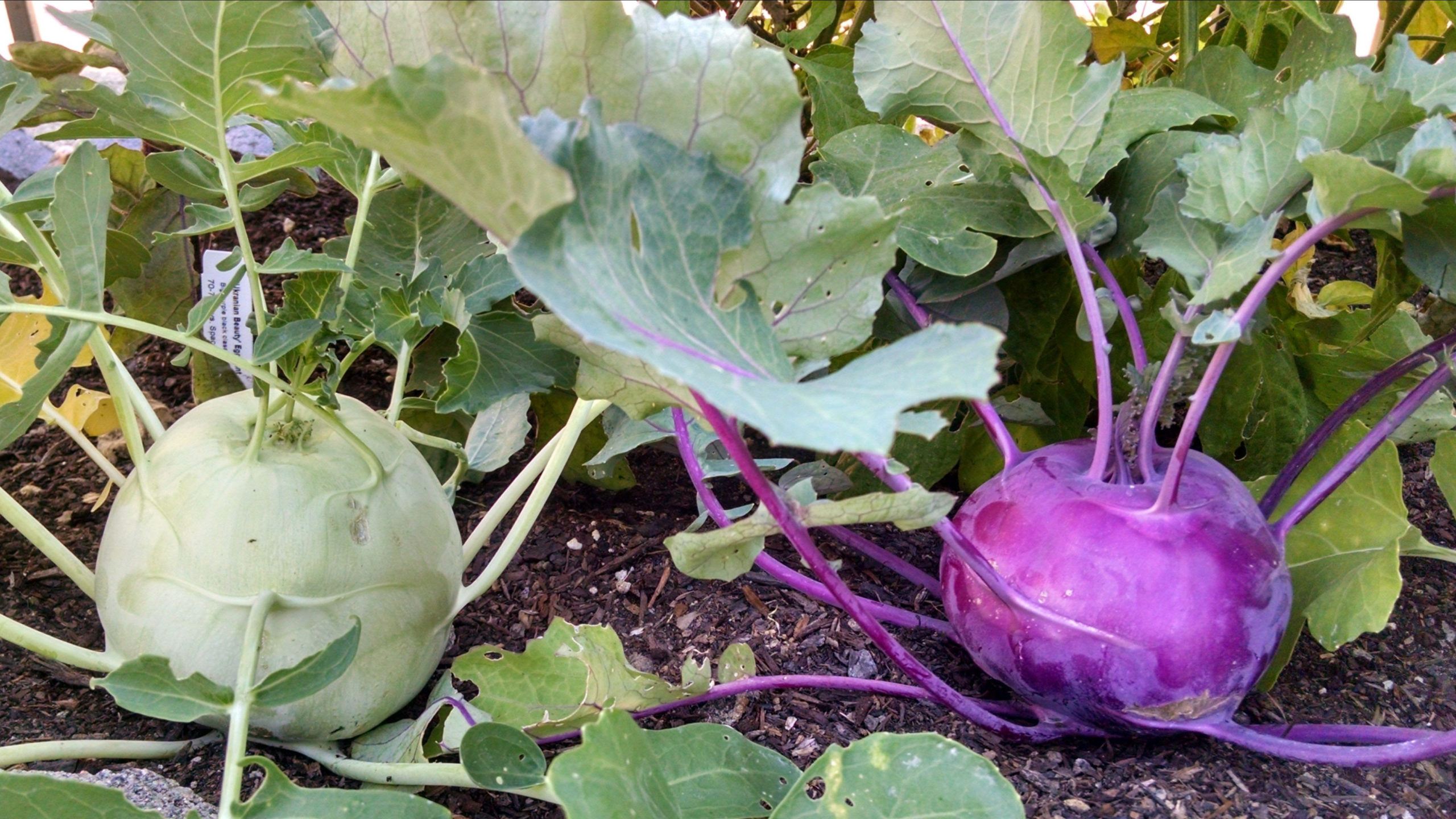
We grow green and purple kohlrabi. Once you peel off the tough skin, they are identical on the inside. (You shold definitely peel a kohlrabi before you do anything ele to it.)
The Salmon are running again!
We have frozen Steelhead and Sockeye fillets! $21.50/lb. Reply to this email to reserve one. We can deliver on Wednesday with your CSA or hold it for another week.
Steelhead fillets range from 1.5 to 3.3 pounds. Sockeye filets range from .9 to 2.5 lbs.
This Thursday we are expecting more Steelhead, Coho, and possibly some Chinook. Check out our Food4All website next week to purchase yours!
We have smoked salmon too!
Joe and Dominica also smoke the salmon they catch!
We have 1/3-ish to 1/2-ish pound packs. $31.50/lb. (Starting next week, this will be on our Food4All site as well, but this week, reply to this email and I will send it along with your CSA.)
These are great for bagel sandwiches, snacking on, putting in pasta or eggs!
Ingredients: steelhead or sockeye, soy sauce, pancake syrup Worcestershire sauce, pepper, honey
Add-Ons
Email us by Tuesday night if you would like us to pack you anything extra from the store for pickup with your CSA. You can pay when you pick up at the Farm Store or our Farm Stand at the Bend Farmers Market.
Pickles/Fermented Veggies:
- Pickled Roma Dilly Beans: $16/quart
- Zucchini relish, Spicy Cucumber Pickle Spears, and Pickled Kohlrabi: $9/pint
- Cucumber Dill Pickles and Pickled Kohlrabi: $16/quarts
- Turmeric Sauerkraut and Regular Sauerkraut: $5/pint
- Kimchi: $9/pint
- Fermented Beets and Carrots: $16/quart
- Red Fermented Hot Sauce (medium) and Hot AF Fermented Hot Sauce: $8/5 fl oz
- Tomato sauce: $16/quart
Honey: $10/pint; $20/quart
Flours and Wheat Berries:
- 2 lb bags hard red, hard white, soft white flour: $5/bag
- 2 lb bag buckwheat flour: $7/bag
- 2 lb bag corn flour: $12/bag
- 2 lb bag rolled Tibetan black barley: $5/bag
- 3 lb bag hard red wheat berries $5/bag
Meat:
- $8/lb: ground beef
- $10/lb: chuck roast, brisket, and short ribs
- $11/lb: cubed round steak
- $12: Top Sirloin Steaks
- $14/lb: Rib Steak ribeye
- $15/lb: boneless New York Strip
Dried Herbs:
- Medicinal Herbs: Yarrow, Calendula, Catnip, Chamomile, Lavender, Lemon Balm, Mint, Rose: $6/oz
Don’t forget to find the beauty in all your weeds. See you this Wednesday!
Please email us let us know if you can’t make Wednesday or if someone else is picking up for you. We can’t wait to see you on Wednesday!




